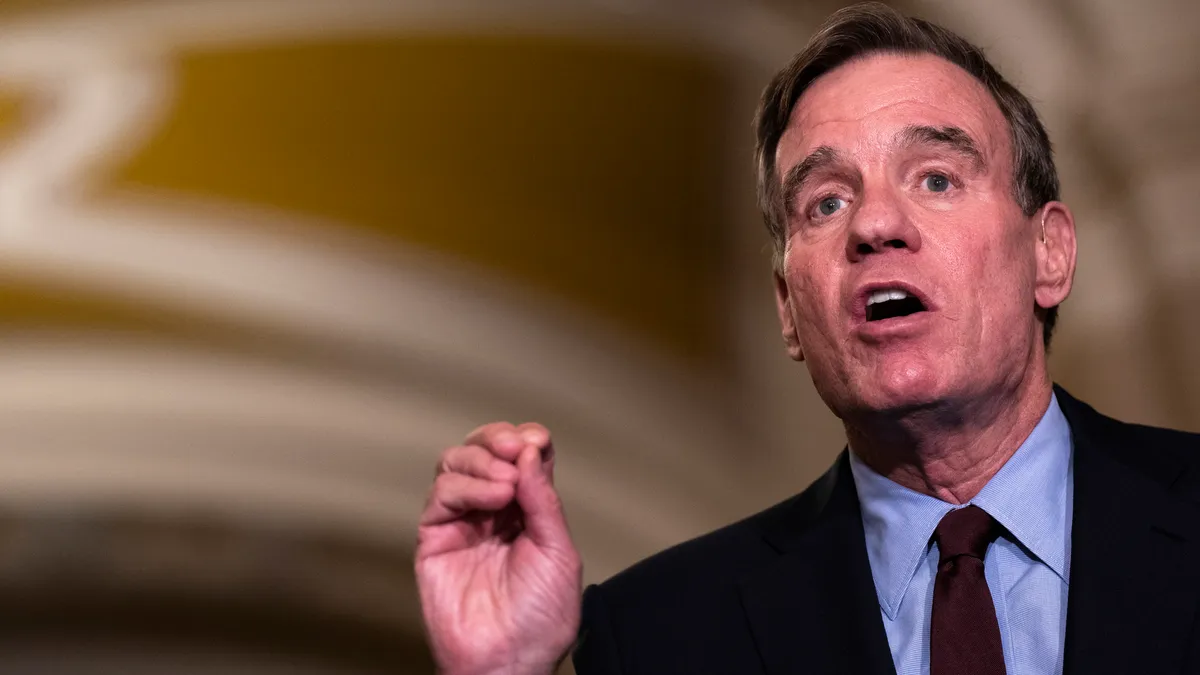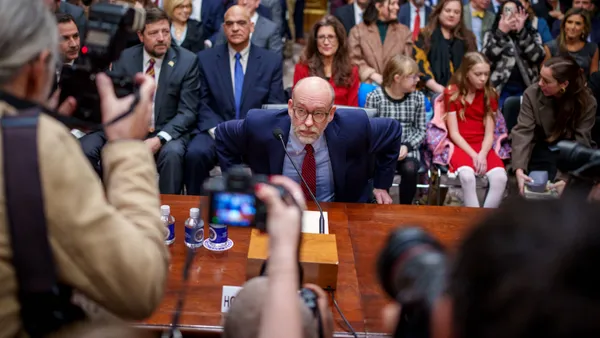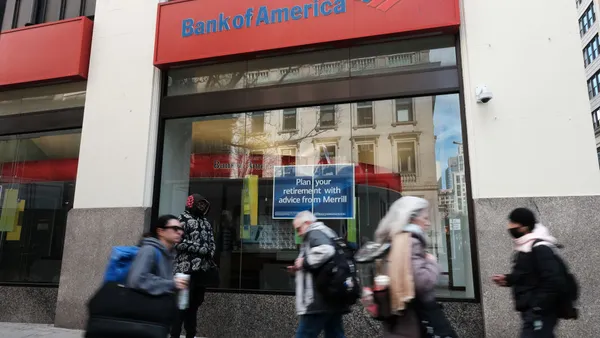Dive Brief:
- Sen. Mark Warner, D-VA, introduced legislation Thursday seeking to require banks to engage in periodic test borrowing at the Federal Reserve’s discount window.
- The bill would also require regulators evaluating banks’ liquidity preparedness to give lenders credit if they can successfully use the window. The discount window is the Fed’s short-term lending facility designed to help banks facing a liquidity crunch.
- The bill also outlined ways the Fed needs to modernize discount window operations, including by extending available hours, according to a summary of the legislation shared with Banking Dive.
Dive Insight:
Warner highlighted the “urgent need to reform” the window following last year’s regional bank failures, saying in a statement Friday the bill “will implement key reforms to make sure that banks can actually use the discount window, reduce the unnecessary stigma associated with that use, and improve the window’s operations to meet the challenges of the digital age.”
The lawmaker indicated his intentions to put forth the legislation last December, positing that requiring banks to periodically use the discount window would ease the stigma that has long been tied with the central bank’s safety net.
That stigma largely comes from bank examiners and supervisors, as well as the market’s reaction to a discount window draw, analysts said. It’s an issue Fed Chair Jerome Powell was asked about during an appearance this month before the House Financial Services Committee.
“That’s tough, that’s a tough one,” Powell told lawmakers of the stigma. “There’s a lot of ways to get after that. We’re studying all of them.”
Requiring use of the discount window could help reduce stigma, he noted. Publicly disclosing discount window users every two years – a requirement of the Dodd-Frank Act – “doesn’t help at all,” he told lawmakers.
The Fed wants banks to be able to freely use the discount window, Powell emphasized.
“We’ve been focused on this issue for a long time. Have not made a lot of progress on it,” he said during the July 10 hearing. “But right now, I think we’re very focused on it.”
Advocates of discount window improvements said there’s a disconnect between what Fed officials such as Powell have telegraphed about its use, and what bank examiners and supervisors convey – which is that using the window is problematic and discouraged.
Bank of America CEO Brian Moynihan told Warner in December that “we’re 100% reluctant to use it as an industry, because it looks like we’re weak.”
“I’d say the biggest problem certainly is that no one is currently willing to use the window, because of the stigma associated with it,” said Bill Nelson, executive vice president and chief economist at the Bank Policy Institute. “That’s a long-standing problem.”
From Powell’s comments to recent discount window mentions by Fed Governor Michelle Bowman, Dallas Fed President Lorie Logan and Federal Deposit Insurance Corp. Vice Chair Travis Hill, conversation around the importance and utility of the central bank’s lending tool has increased of late.
The regional bank failures of March 2023 have pushed the issue to the forefront, analysts said, as financial institutions confront liquidity concerns in a world where bank runs can occur swiftly. Signature and Silicon Valley Bank, for example, weren’t set up to tap the discount window.
“Every bank in America should be fully set up at the window as part of its liquidity toolkit,” Logan said last week.
“Part of why it’s coming this much later is, I think, Basel III took a lot of oxygen out of the rest of the banking policy space,” Steven Kelly, associate director of research at Yale School of Management’s Program on Financial Stability, said in reference to the multiagency proposal that would raise by 19% the amount of capital the biggest U.S. banks must hold.
Concurrently, the Fed has been making improvements to modernize the window. Powell acknowledged “the infrastructure’s a little tired, and we’re investing in that and making it more user friendly.”
One of those improvements: allowing banks to submit funding requests electronically, rather than by picking up the phone.
Kelly said some of the stigma may go away if the Fed changes the way it reports weekly balance sheet activities. While community banks can tap the discount window with little consequence, and bigger banks with more diverse business models tend to be more stable in a crisis, regional banks are easy to spot when the Fed reports its weekly data, Kelly said.
“That is a total own-goal by the Fed,” he said.
Under Warner’s bill, the Fed would indeed have to review and consider changes to the way it reports weekly data, “to avoid market distortions” that could put banks at a disadvantage.
The legislation also would require banks’ liquidity contingency plans to include details on seeking advances and receive approval from the Fed or a primary supervisor; and the Fed must work with the Federal Home Loan Bank system to “harmonize” policies and procedures for pledging and transferring collateral among FHLBs and Fed banks.
Nelson, a former Fed official who helped develop discount window policy and was involved in a 2003 overhaul of the lending tool, said he’s “never seen anything quite like the consensus that is building to take difficult but potentially very meaningful action to improve the discount window.”
“Almost entirely all cylinders are firing now,” he said.
Warner’s “sensible” legislation will make sure banks are operationally ready to borrow from the window when they’re in need of liquidity while reflecting that readiness in corresponding liquidity regulations and requirements, Nelson said in a statement Friday.
You’re “never going to be able to convince banks that the examiners want them to borrow, if they can’t point to borrowing as what they plan to do if they come under stress,” Nelson said.
When it comes to removing the stigma from turning to the discount window, “the odds are always tough,” Nelson said.
“As long as borrowing is rare, borrowing will be seen as a problem.”
The Fed declined to comment Friday.














